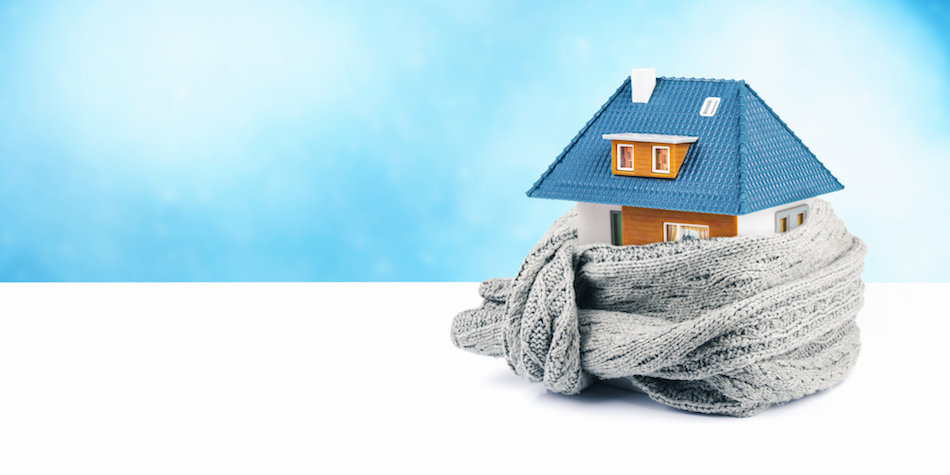How to Effectively Insulate Your Home
Posted by Justin Havre on Tuesday, November 20th, 2018 at 1:29pm.
 For as cold as winters get in the Great White North, insulation isn't a very popular topic of conversation. After all, it's easy to get caught up in the day-to-day minutiae of life instead of thinking about how much heat homeowners are losing to the outdoors. But for those who care about their energy bills and their resale price, they may want to reconsider.
For as cold as winters get in the Great White North, insulation isn't a very popular topic of conversation. After all, it's easy to get caught up in the day-to-day minutiae of life instead of thinking about how much heat homeowners are losing to the outdoors. But for those who care about their energy bills and their resale price, they may want to reconsider.
Signs of Poor Insulation
If utility bills are starting to climb sky-high or the ice dams of the home are getting bigger and bigger every year, these are usually clear signs the home needs better insulation. However, homeowners may want to consider getting an energy audit regardless. Insulation standards change on regular basis, meaning even newer homes may not be nearly as efficient as homeowners believe them to be. Talking to friends or family about their bills may provide some basis for comparison, but it's possible their home is poorly insulated too.
How to Begin Home Re-Insulation
The first step of insulating a home is usually to seal up the air bypasses. This will not only control the movement of air in the home, it will also increase the air quality for residents as well. Bypasses can be located in some fairly dangerous spots in the home, so it's usually recommended that homeowners hire an energy professional to do the job. Most experts will recommend that homeowners splurge on foam sealant because it's flexible and can expand to fill even the tiniest nooks in the home.
Understanding Insulation Grades
Homeowners who do need to purchase additional insulation usually start with the attic. To choose the best types of insulation, they'll need to know how certain types are graded. Each product comes with its own R-value, with higher numbers indicating better insulation. Those in particularly cold climates may want to spring for R-49 or even R-60 for optimum comfort. Those who live in milder climates can opt for R-38, while basements can go as low as R-20. When it comes to the types of insulation, many people prefer loose-fill. It may be more difficult to install, but it's also an inexpensive and effective choice. Most homeowners will start with the rafters of the attic before moving to the ceilings, joints, and walls.
Popular Insulation Types
Just like there are many materials used to craft homes, there are many home insulation types as well. Each has its own benefits and drawbacks. Some of the most popular home insulation types used today include:
- Blanket or Rolled Insulation - This category of includes fiberglass, mineral, natural and man-made fibers. It is easy to install and relatively inexpensive.
- Concrete Block Insulation - Concrete block insulation requires specialized skills to insulate the blocks at the surface.
- Foam Board - When insulating with foam board, a high insulating value is achieved with a relatively thin product--though it can be more expensive than other options.
- Insulating Forms - With insulating forms, the insulation is built into the structure of the building itself, providing a huge benefit.
- Loose Fill - Loose fill can include fiberglass, cellulose and other materials. It is blown into small crevasses that may be difficult to insulate otherwise.
- Sprayed Foam Insulation - Usually found in a can, this foam is pumped or sprayed into areas to fill in and insulate. It is good for filling areas that are difficult to reach.
There are other types of insulation that are used in specialty situations too. Choosing the right type up front can mean big savings in the long haul.
Installing New Insulation
Insulation installation isn't really a DIY job, especially considering just how dangerous certain spots of the home can be (e.g., working close to the wiring inside the walls). Installing insulation may include working with sheet metal to serve as a barrier between the brickwork and the roof of the chimney, as well as high-temperature caulk to protect the home from fires. It's also possible to make the home too insulated if an owner isn't careful. If there's no ventilation in the home because there's too much insulation, the chances of water damage can rise significantly. This can not only cause rot to the home, it can also cause dangerous ice dams.
It may take a lot of work to insulate an East Calgary home or elsewhere, but it's also one of the best possible home improvement decisions that can be made. Homeowners might be surprised to learn just how much money they can save by taking the time to insulate their home. It's not only good for energy bills, it also has one of the highest rates of returns when it comes to resale value (usually 100% returns or more.)

